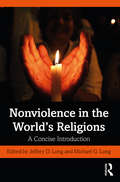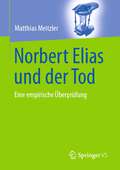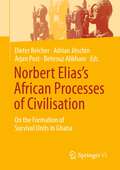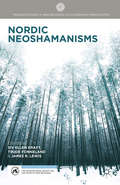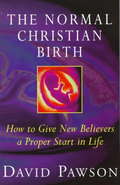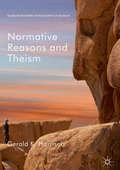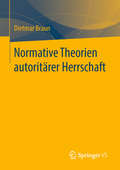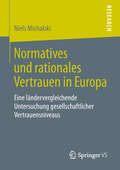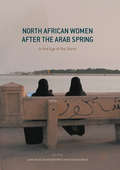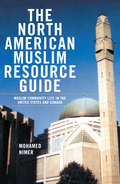- Table View
- List View
Nonviolence before King: The Politics of Being and the Black Freedom Struggle (Justice, Power, and Politics)
by Anthony C. SiracusaIn the early 1960s, thousands of Black activists used nonviolent direct action to challenge segregation at lunch counters, movie theaters, skating rinks, public pools, and churches across the United States, battling for, and winning, social change. Organizers against segregation had used litigation and protests for decades but not until the advent of nonviolence did they succeed in transforming ingrained patterns of white supremacy on a massive scale. In this book, Anthony C. Siracusa unearths the deeper lineage of anti-war pacifist activists and thinkers from the early twentieth century who developed nonviolence into a revolutionary force for Black liberation.Telling the story of how this powerful political philosophy came to occupy a central place in the Black freedom movement by 1960, Siracusa challenges the idea that nonviolent freedom practices faded with the rise of the Black Power movement. He asserts nonviolence's staying power, insisting that the indwelling commitment to struggle for freedom collectively in a spirit of nonviolence became, for many, a lifelong commitment. In the end, what was revolutionary about the nonviolent method was its ability to assert the basic humanity of Black Americans, to undermine racism's dehumanization, and to insist on the right to be.
Nonviolence in the Mahabharata: Siva’s Summa on Rishidharma and the Gleaners of Kurukshetra (Routledge Hindu Studies Series)
by Alf HiltebeitelIn Indian mythological texts like the Mahābhārata and Rāmāyaṇa, there are recurrent tales about gleaners. The practice of "gleaning" in India had more to do with the house-less forest life than with residential village or urban life or with gathering residual post-harvest grains from cultivated fields. Gleaning can be seen a metaphor for the Mahābhārata poets’ art: an art that could have included their manner of gleaning what they made the leftovers (what they found useful) from many preexistent texts into Vyāsa’s “entire thought”—including oral texts and possibly written ones, such as philosophical debates and stories. This book explores the notion of non-violence in the epic Mahābhārata. In examining gleaning as an ecological and spiritual philosophy nurtured as much by hospitality codes as by eating practices, the author analyses the merits and limitations of the 9th century Kashmiri aesthetician Anandavardhana that the dominant aesthetic sentiment or rasa of the Mahābhārata is shanta (peace). Mahatma Gandhi's non-violent reading of the Mahabharata via the Bhagavad Gita are also studied. This book by one of the leaders in Mahābhārata studies is of interest to scholars of South Asian Literary Studies, Religious Studies as well as Peace Studies, South Asian Anthropology and History.
Nonviolence in the Mahabharata: Siva’s Summa on Rishidharma and the Gleaners of Kurukshetra (Routledge Hindu Studies Series)
by Alf HiltebeitelIn Indian mythological texts like the Mahābhārata and Rāmāyaṇa, there are recurrent tales about gleaners. The practice of "gleaning" in India had more to do with the house-less forest life than with residential village or urban life or with gathering residual post-harvest grains from cultivated fields. Gleaning can be seen a metaphor for the Mahābhārata poets’ art: an art that could have included their manner of gleaning what they made the leftovers (what they found useful) from many preexistent texts into Vyāsa’s “entire thought”—including oral texts and possibly written ones, such as philosophical debates and stories. This book explores the notion of non-violence in the epic Mahābhārata. In examining gleaning as an ecological and spiritual philosophy nurtured as much by hospitality codes as by eating practices, the author analyses the merits and limitations of the 9th century Kashmiri aesthetician Anandavardhana that the dominant aesthetic sentiment or rasa of the Mahābhārata is shanta (peace). Mahatma Gandhi's non-violent reading of the Mahabharata via the Bhagavad Gita are also studied. This book by one of the leaders in Mahābhārata studies is of interest to scholars of South Asian Literary Studies, Religious Studies as well as Peace Studies, South Asian Anthropology and History.
Nonviolence in the World’s Religions: A Concise Introduction
by Jeffery D. Long Michael G. LongThe twenty-first century began with the terrorist attacks of September 11, 2001. Much has been written and debated on the relationship between faith and violence, with acts of terror at the forefront. However, the twentieth century also gave rise to many successful nonviolent protest movements. Nonviolence in the World’s Religions introduces the reader to the complex relationship between religion and nonviolence. Each of the essays delves into the contemporary and historical expressions of the world’s major religious traditions in relation to nonviolence. Contributors explore the literary and theological foundations of a tradition’s justification of nonviolence; the ways that nonviolence has come to expression in its beliefs, symbols, rituals, and other practices; and the evidence of nonviolence in its historic and present responses to conflict and warfare. The meanings of both religion and nonviolence are explored through engagement with nonviolence in Hindu, Buddhist, Chinese, Sikh, Jewish, Christian, Islamic, Jain, and Pacific Island religious traditions. This is the ideal introduction to the relationship between religion and violence for undergraduate students, as well as for those in related fields, such as religious studies, peace and conflict studies, area studies, sociology, political science, and history.
Nonviolence in the World’s Religions: A Concise Introduction
by Jeffery D. Long Michael G. LongThe twenty-first century began with the terrorist attacks of September 11, 2001. Much has been written and debated on the relationship between faith and violence, with acts of terror at the forefront. However, the twentieth century also gave rise to many successful nonviolent protest movements. Nonviolence in the World’s Religions introduces the reader to the complex relationship between religion and nonviolence. Each of the essays delves into the contemporary and historical expressions of the world’s major religious traditions in relation to nonviolence. Contributors explore the literary and theological foundations of a tradition’s justification of nonviolence; the ways that nonviolence has come to expression in its beliefs, symbols, rituals, and other practices; and the evidence of nonviolence in its historic and present responses to conflict and warfare. The meanings of both religion and nonviolence are explored through engagement with nonviolence in Hindu, Buddhist, Chinese, Sikh, Jewish, Christian, Islamic, Jain, and Pacific Island religious traditions. This is the ideal introduction to the relationship between religion and violence for undergraduate students, as well as for those in related fields, such as religious studies, peace and conflict studies, area studies, sociology, political science, and history.
Norah's Ark (Mills And Boon Silhouette Ser.)
by Judy BaerHi, my name is Bentley. I'm a mutt with a dash of pit bull in the soup, and I have issues. I'm not likely to win any beauty pageants, and I'm afraid of cats. But my human, Norah Kent, thinks I'm the greatest despite all my shortcomings.
Norbert Elias und der Tod: Eine empirische Überprüfung
by Matthias MeitzlerDer Einfluss von Norbert Elias als soziologischer Klassiker ist unbestritten. Dieser Status verdankt sich in erster Linie seiner Theorie vom Zivilisationsprozess. In dessen Geist steht auch Elias‘ 1982 erschienenes und in mehrere Sprachen übersetztes Buch Über die Einsamkeit der Sterbenden in unseren Tagen. Dort widmet er sich der Frage, wie Menschen der Endlichkeit des Lebens gegenüberstehen, unter welchen Bedingungen sie sterben, sich voneinander verabschieden, umeinander trauern und sich aneinander erinnern. Im Zentrum steht die Einsicht, dass es immerzu die Lebenden sind, die das Sterblichkeitsproblem zu bewältigen haben. Menschen in zivilisierten Gesellschaften tun dies Elias zufolge, indem sie Sterben und Tod verdrängen. Als schambesetztes Thema werde das Lebensende in alltäglichen Gesprächssituationen zumeist ausgeblendet; ferner haben sich Sterbeprozesse im Zuge sozialer Ausdifferenzierung vom heimischen Familienumfeld in Institutionen wie das Krankenhaus verlagert. Diese Entwicklung führe dazu, dass heute anders gestorben werde als früher: steril, geräuschlos, unauffällig – und vor allem einsam. Für die thanatosoziologische Erforschung des Umgangs mit Sterben, Tod und Trauer erwies sich Elias‘ Studie als Meilenstein. Kein anderes deutschsprachiges Buch dürfte in diesem Zusammenhang häufiger zitiert worden sein. Was jedoch fehlt, ist eine systematische Überprüfung der empirischen Aktualität seiner Thesen. Dieses Desiderat bildet den Ansatzpunkt für die vorliegende Untersuchung. Ausgehend von originären qualitativen Forschungen werden zentrale Aspekte der Elias’schen Perspektive aufgegriffen und auf ihre Anschlussfähigkeit hin analysiert. Ein Schwerpunkt liegt auf der Frage, was der soziale Wandel der vergangenen Jahrzehnte für die heutige Situation der Sterbenden bedeutet.
Norbert Elias’s African Processes of Civilisation: On the Formation of Survival Units in Ghana
by Barbara Mennell Stephen MennellIn 1962 Norbert Elias was invited as a temporary professor at the University of Ghana in Legon, Accra. He taught, employed fieldwork, travelled, and met many people in postcolonial Africa. When Elias left Ghana in 1964, he had laid the basic groundwork for a fundamental sociological argument on human societies.The volume on hand is a selection of his unpublished writings based on these experiences. Together they touch upon not only the well-known criticism of Eurocentrism and a developmental perspective but also what could be considered the core of Elias’s work: the concept of civilisation. In a foreword, Dieter Reicher and Adrian Jitschin have endeavoured to explain and break down the relations of Elias’s African experience to the rest of his work and biography. They also clarified some misleading interpretations of Elias’s time in Africa. Finally, Arjan Post has uncovered the previously unknown fascinating story of Elias’ encounter with Malcolm X in an epilogue.
Nordic Neoshamanisms (Palgrave Studies in New Religions and Alternative Spiritualities)
by James R. Lewis Siv Ellen Kraft Trude FonnelandThis book proposes that the drive for religiosity and experiences of the sacred are far from lost in contemporary western societies. The contributors' objective is to explore the myriad of ways late modern shamanism is becoming more vital and personally significant to people, communities, and economies in Nordic countries.
The Nordic Paul: Finnish Approaches to Pauline Theology (The Library of New Testament Studies #374)
by Lars Aejmelaeus Antti MustakallioThis book contains essays on the letters and theology of the Apostle Paul from leading Pauline scholars. The majority of the essays are based on papers given in the first Finnish national seminar on Paul held in the University of Helsinki in January 2007. Finnish contributions to scholarly discussion on Pauline theology have been widely recognized as challenging and thought-provoking, particularly in regards to Paul's view on the Mosaic Law and soteriology. Heikki Räisänen's view on Paul's inconsistent thinking about Law and other topics has served to polarize discussion among Finnish scholars. The opening essay by Stephen Westerholm outlines the debate and its relation to international discussion. The essays by Heikki Räisänen, Kari Kuula, and Timo Laato are fruits of this on-going discussion. Niko Huttunen approaches the question of Paul and the Law from the Stoic point of view, while Risto Saarinen examines its relation to the theology of Martin Luther. Other principal topics include Paul's opponents and methodological discussion. A comprehensive way to analyze Paul's argumentation is sought in Mika Hietanen's essay. Lauri Thurén examines how Paul's rhetoric must be taken into account when deciphering historical information from his letters. His essay takes Paul's opponents as an example. The opponents are also dealt with by Lars Aejmelaeus and Nina Pehkonen. Their essays focus on anti-Pauline opposition in Corinth and the antagonists in Philippians, respectively.
Norito: A Translation of the Ancient Japanese Ritual Prayers - Updated Edition
by Donald L. PhilippiThis volume presents the only English translation of the prayers of Japan's indigenous religious tradition, Shinto. These prayers, norito, are works of religious literature that are basic to our understanding of Japanese religious history. Locating Donald Philippi as one of a small number of scholars who have developed a perceptive approach to the problem of "hermeneutical distance" in dealing with ancient or foreign texts, Joseph M. Kitagawa recalls Mircea Eliade's observation that "most of the time [our] encounters and comparisons with non-Western cultures have not made all the `strangeness' of these cultures evident. . . . We may say that the Western world has not yet, or not generally, met with authentic representatives of the `real' non-Western traditions." Composed in the stately ritual language of the ancient Japanese and presented as a "performing text," these prayers are, Kitagawa tells us, "one of the authentic foreign representatives in Eliade's sense." In the preface Kitagawa elucidates their significance, discusses Philippi's methods of encountering the "strangeness" of Japan, and comments astutely on aspects of the encounter of East and West.
Norito: A Translation of the Ancient Japanese Ritual Prayers - Updated Edition
by Donald L. PhilippiThis volume presents the only English translation of the prayers of Japan's indigenous religious tradition, Shinto. These prayers, norito, are works of religious literature that are basic to our understanding of Japanese religious history. Locating Donald Philippi as one of a small number of scholars who have developed a perceptive approach to the problem of "hermeneutical distance" in dealing with ancient or foreign texts, Joseph M. Kitagawa recalls Mircea Eliade's observation that "most of the time [our] encounters and comparisons with non-Western cultures have not made all the `strangeness' of these cultures evident. . . . We may say that the Western world has not yet, or not generally, met with authentic representatives of the `real' non-Western traditions." Composed in the stately ritual language of the ancient Japanese and presented as a "performing text," these prayers are, Kitagawa tells us, "one of the authentic foreign representatives in Eliade's sense." In the preface Kitagawa elucidates their significance, discusses Philippi's methods of encountering the "strangeness" of Japan, and comments astutely on aspects of the encounter of East and West.
Norito: A Translation of the Ancient Japanese Ritual Prayers
by Donald L. Philippi Joseph Mitsuo KitagawaThis volume presents the only English translation of the prayers of Japan's indigenous religious tradition, Shinto. These prayers, norito, are works of religious literature that are basic to our understanding of Japanese religious history. Locating Donald Philippi as one of a small number of scholars who have developed a perceptive approach to the problem of "hermeneutical distance" in dealing with ancient or foreign texts, Joseph M. Kitagawa recalls Mircea Eliade's observation that "most of the time [our] encounters and comparisons with non-Western cultures have not made all the `strangeness' of these cultures evident. . . . We may say that the Western world has not yet, or not generally, met with authentic representatives of the `real' non-Western traditions." Composed in the stately ritual language of the ancient Japanese and presented as a "performing text," these prayers are, Kitagawa tells us, "one of the authentic foreign representatives in Eliade's sense." In the preface Kitagawa elucidates their significance, discusses Philippi's methods of encountering the "strangeness" of Japan, and comments astutely on aspects of the encounter of East and West.
The Normal Christian Birth: How to Give New Believers a Proper Start in Life
by David PawsonBasing his study on the New Testament, David Pawson advocates a synthesis of the 'liberal' emphasis on repentance, the 'evangelical' on faith, the 'sacramental' on baptism and the 'pentecostal' on the Spirit. He then relates these 'spiritual dooes' to the concepts of conversion and regeneration.The Normal Christian Birth looks at crucial and controversial texts, challenging traditional interpretations. The final section on evangelistic counselling questions the adequacy of the typical 'sinner's prayer' approach. Drawing from scripture and experience, David Pawson gives many practical tips on helping potential discipes to repent, believe, be baptised and receive the Spirit.
Norman Kings of Sicily and the Rise of the Anti-Islamic Critique: Baptized Sultans
by Joshua C. BirkThis book is an investigative study of Christian and Islamic relations in the kingdom of Sicily during the eleventh and twelfth centuries. It has three objectives. First, it establishes how and why the Norman rulers of Sicily, all of whom were Christians, incorporated Muslim soldiers, farmers, scholars, and bureaucrats into the formation of their own royal identities and came to depend on their Muslim subjects to project and enforce their political power. Second, it examines how the Islamic influence within the Sicilian court drew little scrutiny, and even less criticism, from intellectuals in the wider world of Latin Christendom during the time period. Finally, it contextualizes and explains the eventual emergence of Christian popular violence against Muslims in Sicily in the latter half of the twelfth century and the evolution of a wider discourse of anti-Islamic sentiment throughout Western Europe.
Normative and Sectarian Judaism in the Second Temple Period: Normative And Sectarian Judaism In The Second Temple Period (The Library of Second Temple Studies #54)
by Moshe WeinfeldThe book brings together the essays on Second Temple Judaism by Moshe Weinfeld, one of the leading figures in comparative literature and the history of religion in ancient Near Eastern studies. This integrated collection centers on the religious debates within Second Temple Judaism between the sectarian Qumran community and the Pharisees. It examines topics such as liturgy, law, theology and ideology; issues that established Jewish religious forms for normative, Rabbinic Judaism. It also sets these debates in the broader context of texts and ideas from the Bible and ancient Near East texts on one hand and the New Testament and Rabbinic Judaism on the other.The book comprises four sections. The first, 'Prayer and Worship' analyzes constitutive ideas reflected in the definitive prayers of Qumran and Pharisaic liturgy. The second, 'The Qumran Scrolls' engages various legal and hermeneutic issues in the literature of the Qumran sect. Section three, 'Theology and Ideology' treats a group of foundational Jewish concepts from the historical point of view. The final section 'The New Testament' brings several basic concepts and conceptions of Judaism into New Testament context.This is volume 54 in the Library of Second Temple Studies series (formerly the Journal for the Study of the Pseudepigrapha Supplement series).
Normative Reasons and Theism (Palgrave Frontiers in Philosophy of Religion)
by Gerald K. HarrisonNormative reasons are reasons to do and believe things. Intellectual inquiry seems to presuppose their existence, for we cannot justifiably conclude that we exist; that there is an external world; and that there are better and worse ways of investigating it and behaving in it, unless there are reasons to do and believe such things. But just what in the world are normative reasons? In this book a case is made for believing normative reasons are favouring relations that have a single, external source, filling this significant gap in the literature in an area within contemporary philosophy that has quickly grown in prominence. Providing a divine command metanormative analysis of normative reasons on entirely non-religious grounds, its arguments will be relevant to both secular and non-secular audiences alike and will address key issues in meta-ethics, evolutionary theory - especially evolutionary debunking threats to moral reasons and the normative more generally - and epistemology.
Normative Reasons and Theism (Palgrave Frontiers in Philosophy of Religion)
by Gerald K. HarrisonNormative reasons are reasons to do and believe things. Intellectual inquiry seems to presuppose their existence, for we cannot justifiably conclude that we exist; that there is an external world; and that there are better and worse ways of investigating it and behaving in it, unless there are reasons to do and believe such things. But just what in the world are normative reasons? In this book a case is made for believing normative reasons are favouring relations that have a single, external source, filling this significant gap in the literature in an area within contemporary philosophy that has quickly grown in prominence. Providing a divine command metanormative analysis of normative reasons on entirely non-religious grounds, its arguments will be relevant to both secular and non-secular audiences alike and will address key issues in meta-ethics, evolutionary theory - especially evolutionary debunking threats to moral reasons and the normative more generally - and epistemology.
Normative Theorien autoritärer Herrschaft
by Dietmar BraunWährend die normative Begründung von Demokratie seit der Antike ein zentrales Thema der politischen Ideengeschichte darstellt, erhält die Rechtfertigung autoritärer Herrschaft bisher relativ wenig Aufmerksamkeit. Diese Diskrepanz soll mit diesem Buch beseitigt werden. Übersichtsweise werden die relevanten Beiträge politischer Philosophen und Vertreter religiöser und ideologischer Strömungen abgehandelt und zu sieben Autoritätstypen zusammengefasst: den sittlichen, religiösen, schützenden, vernünftigen, ideologischen, elitären und populistischen Autoritarismus.
Normatives und rationales Vertrauen in Europa: Eine ländervergleichende Untersuchung gesellschaftlicher Vertrauensniveaus
by Niels MichalskiObwohl zwischenmenschliches Vertrauen als wichtige Ressource moderner Gesellschaften gilt, vernachlässigen bisherige Untersuchungen zwischenmenschlichen Vertrauens die Bedeutung kultureller Wertorientierungen. Mit der Betonung wertbasierter Begründungen des Vertrauens liefert Niels Michalski wichtige Beiträge zur Integration divergierender Vertrauenskonzepte und zum Verständnis der Mikro-Makro-Struktur des Vertrauens. Anhand der Daten des „European Social Survey“ von 2002–2012 zeigt er erstmals, wie prosoziale Werte die Unterschiede in gesellschaftlichen Vertrauensniveaus erklären können. Vertrauen ist in den Ländern am höchsten, in denen prosoziale Werte nicht nur weitverbreitet sind, sondern wo Menschen mit prosozialen Werten auch höheres Vertrauen aufweisen. Der Autor zeigt außerdem, dass die Dominanz eigennütziger Motive die Ausbildung wertebasierten Vertrauens verhindert.
The Normativity of the Natural: Human Goods, Human Virtues, and Human Flourishing (Philosophical Studies in Contemporary Culture #16)
by Mark J. CherryWestern philosophy has long nurtured the hope to resolve moral controversies through reason; thereby to secure moral direction and human meaning without the need for a defining encounter with God or the transcendent. The expectation is for a moral rationality that is universal and able adequately to frame and guide the moral life. Moral and cultural unity was sought though philosophical reflection on human nature and the basic goods of a properly nurtured and virtuous life—that is, through appeal to what has come to be called the natural law. The natural law addresses permissible moral choice through objective understandings of human nature and human goods. Persons are obligated to act in ways that are compatible with creating and integrating the basic human goods into their lives and the lives of others. Such goods provide the basis for practical reasoning about virtuous choices and immediate reasons for action. The goal is the making of rational choices in the pursuit of a virtuous, flourishing, human life. Natural law theorists have argued extensively against human cloning, abortion, and same-gender marriage. Yet, whose assumptions regarding human nature should guide our understanding of the basic goods that mark the full flourishing human life? Moreover, why should nature, even human nature, be thought of as a moral boundary beyond which one must not trespass? Persons may wish actively to direct human evolution, utilizing the tools of both imagination and biotechnology. Perhaps nature is simply a challenge to be addressed, overcome, and set aside. This volume is a critical exploration of natural law theory.
North African Women after the Arab Spring: In the Eye of the Storm
by Larbi Touaf Soumia Boutkhil Chourouq NasriThis book looks with hindsight at the Arab Spring and sheds light on the debates it triggered within North African societies and the alarming developments in women’s rights. Although women played a key role in the success of the uprisings that wiped out long ruling oligarchies across the region, they remain excluded from decision-making circles and the formal political and electoral apparatus. Women's rights are written off constitution drafts, and issues of gender equality are hardly addressed. The chapters that compose this volume present research and reflections from different perspectives to help the reader get a better picture of the profound turmoil that beset this part of the so-called “Arab” World. Adopting an interdisciplinary perspective, the contributors discuss a host of questions related to women and gender in the Arab world and address the broader question of why women's efforts and momentum during the revolution did not seem to pay off the same way they did for men. This book provides an assessment of the situation from the inside. It is intended to help the general public as well as the academic world comprehend the significance of what is going on in this key part of the Islamic World.
North African Women after the Arab Spring: In the Eye of the Storm
by Larbi Touaf Soumia Boutkhil Chourouq NasriThis book looks with hindsight at the Arab Spring and sheds light on the debates it triggered within North African societies and the alarming developments in women’s rights. Although women played a key role in the success of the uprisings that wiped out long ruling oligarchies across the region, they remain excluded from decision-making circles and the formal political and electoral apparatus. Women's rights are written off constitution drafts, and issues of gender equality are hardly addressed. The chapters that compose this volume present research and reflections from different perspectives to help the reader get a better picture of the profound turmoil that beset this part of the so-called “Arab” World. Adopting an interdisciplinary perspective, the contributors discuss a host of questions related to women and gender in the Arab world and address the broader question of why women's efforts and momentum during the revolution did not seem to pay off the same way they did for men. This book provides an assessment of the situation from the inside. It is intended to help the general public as well as the academic world comprehend the significance of what is going on in this key part of the Islamic World.
The North American Muslim Resource Guide: Muslim Community Life in the United States and Canada
by Mohamed NimerThis useful resource provides basic information about Islamic life in the United States. Coverage includes population statistics and analysis, as well as immigration information that tracks the settlement of Islamic people in the America. The guide contains contact information for mosques, community organizations, schools, women's groups, media, and student groups. Recent Islamic-American events over the past five years are also reviewed.To see the Introduction, the table of contents, a generous selection of sample pages, and more, visit the The North American Muslim Resource Guide website.
The North American Muslim Resource Guide: Muslim Community Life in the United States and Canada
by Mohamed NimerThis useful resource provides basic information about Islamic life in the United States. Coverage includes population statistics and analysis, as well as immigration information that tracks the settlement of Islamic people in the America. The guide contains contact information for mosques, community organizations, schools, women's groups, media, and student groups. Recent Islamic-American events over the past five years are also reviewed.To see the Introduction, the table of contents, a generous selection of sample pages, and more, visit the The North American Muslim Resource Guide website.


